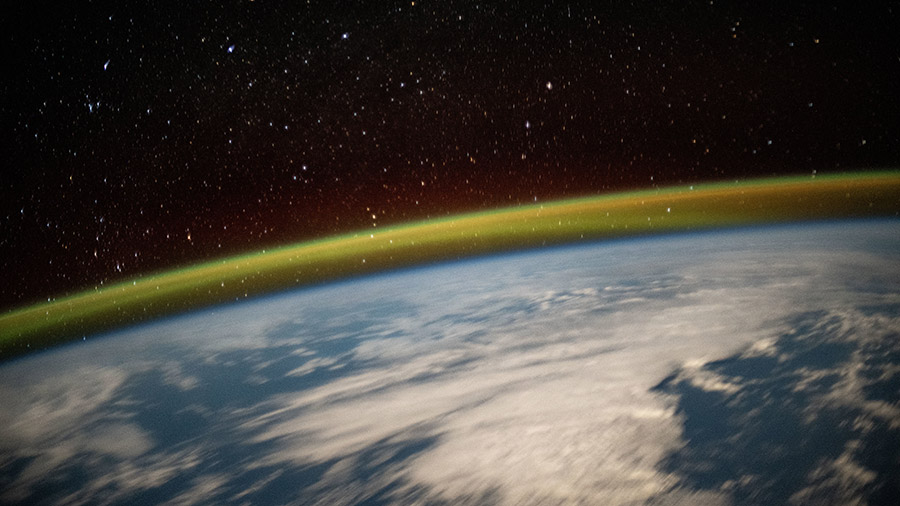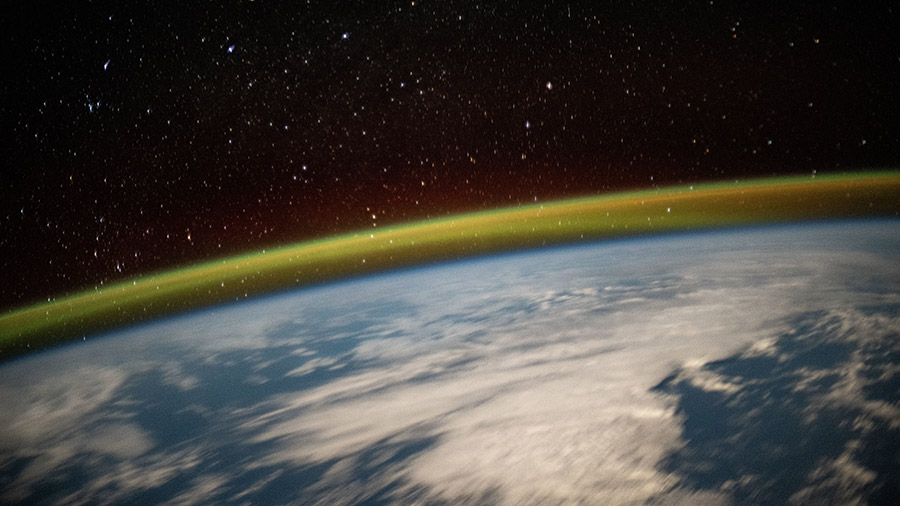
On Wednesday, the crew aboard the International Space Station continued researching ways to protect the human body from the effects of spaceflight and packed a pair of spaceships for return to Earth.
One common symptom of living in space is called “puffy face” and is the result of body fluids moving toward a crew member’s head caused by living in weightlessness. NASA Flight Engineers Matthew Dominick and Jeanette Epps explored ways to prevent that phenomena that may create health issues including changes in eye structure and vision. The duo first conducted eye checks, then collected blood samples, before Dominick put on a pair of thigh cuffs with assistance from Epps. The thigh cuff is being tested for its ability to reverse the space-caused headward fluid shifts. During the test, a variety of sensors, the Ultrasound 2 device, and blood pressure checks collected Dominick’s health data to determine the effectiveness of the thigh cuff.
NASA astronauts Butch Wilmore and Suni Williams spent the day loading cargo inside the Boeing Starliner spacecraft for return to Earth. The pair removed Starliner’s crew seats, which will later be reinstalled, for better access when storing the extra cargo, then photographed and inspected the spaceship’s cabin ahead of its hatch closure scheduled for Thursday. Afterward, the veteran astronaut duo conducted a vision test reading characters off an eye chart so eye doctors could assess their visual acuity, or vision sharpness.
The uncrewed Starliner is scheduled to undock from the Harmony module’s forward port at 6:04 p.m. EDT on Friday and land in New Mexico about six hours later. Undocking coverage begins at 5:45 p.m. Friday on NASA+, the NASA app, YouTube, and the agency’s website. Wilmore and Williams will remain aboard the orbital outpost until February when they are scheduled to return to Earth aboard the SpaceX Dragon spacecraft with the Crew-9 mission.
NASA Flight Engineers Tracy C. Dyson and Mike Barratt spent their day on a host of standard maintenance tasks on the orbital outpost. Dyson videotaped cable configurations in the Kibo laboratory module, collected and stowed biological samples for analysis, then swapped out orbital plumbing hardware. Barratt configured computer tablets, assisted with the Starliner cargo packing, then transferred files stored on an ultrasonic inspection device to a space station computer.
Expedition 71 Commander Oleg Kononenko from Roscosmos began collecting station hardware and science gear that will soon be packed aboard the Soyuz MS-25 crew ship docked to the Prichal docking module. He, Dyson, and Flight Engineer Nikolai Chub are planning to return home aboard the Soyuz spacecraft in late September. Chub worked throughout Wednesday photographing station surfaces being treated with an experimental disinfectant then collecting air samples for microbial analysis. Flight Engineer Alexander Grebenkin explored futuristic piloting techniques on a computer before setting up Earth observation hardware to image Earth’s atmosphere in ultraviolet wavelengths.
Learn more about station activities by following the space station blog, @space_station and @ISS_Research on X, as well as the ISS Facebook and ISS Instagram accounts.
Get weekly video highlights at: https://roundupreads.jsc.nasa.gov/videoupdate/
Get the latest from NASA delivered every week. Subscribe here: www.nasa.gov/subscribe

